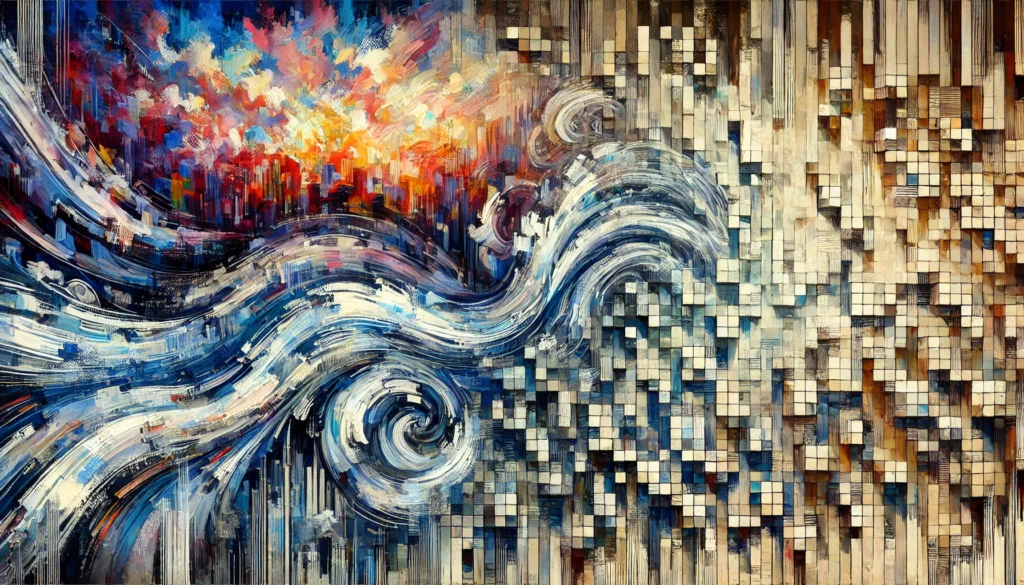
Fusion in artwork is like a creative blender, mixing diverse elements to craft something entirely new and captivating!
Imagine combining flavors in cooking to make a dish that’s unique and surprising.
Similarly, in art, fusion brings together different ingredients—styles, cultures, mediums, and ideas—to form a hybrid work of art.
Here’s a closer look at what “fusion” in artwork really means and why it matters.
1. Styles and Movements
Fusion in styles and movements is where artists blend aspects of various art historical periods to create fresh visual language.
Imagine a painting that merges Cubism’s abstract forms with the vibrant colors of Fauvism or a sculpture that combines Art Nouveau’s smooth curves with Art Deco’s geometric shapes.
By drawing inspiration from these different styles, artists create a unique fusion that challenges viewers’ expectations and broadens the visual experience.
2. Cultures and Traditions
In today’s interconnected world, artists are influenced by global cultural diversity.
Fusion here often involves blending cultural elements to celebrate or explore shared themes.
Picture a Japanese woodblock print infused with Western abstract art influences or an African mask crafted with modern materials and contemporary techniques.
This type of cultural fusion fosters dialogue, respect, and appreciation across traditions, reminding us of the beauty and variety of global heritage.
3. Mediums and Techniques
Fusion isn’t limited to content and style—it also includes the combination of different artistic mediums and techniques.
Imagine a sculpture made from found objects with traditional carving, or a digital piece that blends photography, painting, and graphic design.
By crossing boundaries between mediums, artists can create surprising textures, dimensions, and effects that wouldn’t be possible in a single medium.
This technical fusion expands the possibilities of expression and invites audiences to reconsider the conventional roles of materials in art.
4. Concepts and Ideas
Fusion in artwork can also be deeply conceptual, blending ideas and themes to create thought-provoking, multi-layered pieces.
An artist might merge mythology with science fiction, or use a mix of realism and symbolism to explore social and political issues.
By juxtaposing contrasting ideas, artists can offer fresh perspectives on familiar topics, inviting viewers to see issues from new angles and inspiring reflection.
Why is Fusion Important?
Fusion is more than a trend—it’s a reflection of our interconnected world and a vital force in the evolution of art.
- Innovation: Fusion pushes boundaries and leads to new, groundbreaking forms of expression. Artists who experiment with fusion can create unique styles that feel fresh and relevant.
- Cultural Exchange: Fusion promotes cross-cultural understanding by blending diverse traditions, inspiring audiences to appreciate and celebrate cultural diversity.
- Personal Expression: Fusion allows artists to reflect their multifaceted identities and perspectives, drawing from a rich tapestry of influences to express themselves authentically.
Fusion in art is a celebration of creativity, diversity, and the endless possibilities of artistic expression.
In a world where cultures and ideas are more interconnected than ever, fusion not only reflects our shared human experience but also opens doors to innovation, understanding, and deeper personal connections with art.
So, next time you see an artwork that blends styles, materials, or ideas, think of it as a creative fusion—a mix that turns familiar elements into something unexpected and extraordinary.
📣 Free Guide
Never Run Out of Ideas Again: The Ultimate Guide to Ai Art Prompts

Leave a Reply